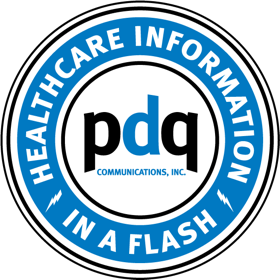Effective healthcare marketing hinges on accurately targeting healthcare providers (HCPs) who will...
As the healthcare marketing industry continues to evolve, so too must your contact and engagement strategies. Among these, physician segmentation and targeting are indispensable for marketers seeking to optimize their efforts and connect with ideal audiences.
The Basics of Physician Targeting
Finding the right healthcare providers for your products and services is an essential first step for your marketing efforts. Understanding your ideal audience and their preferences helps inform your overall strategy, enhance your campaign results, and maximize your return on investment (ROI).
To identify your target market, begin with comprehensive research to understand all of your products and offerings. Gather insights from customer service, sales teams, and client surveys. Utilize claims data to grasp demographic and psychographic information, such as prescribing habits and openness to new therapies.
Getting your products in front of the right physicians is key. You don’t want to market diabetes medication to a cardiac physician.
Several of the most important targeting considerations include:
- Healthcare Specializations
- Prescribing Habits
- Demographic Information
- Location
You’ll also want to analyze your competition’s strategies to refine your approach to find new or untapped markets.
Segmentation: The More Specific, The Better
Segmentation is pivotal to crafting and deploying effective, personalized messaging that boosts engagement and conversion rates.
This involves organizing your audience into clear, non-overlapping groups based on the factors you care about most. This also improves your ability to measure and analyze key performance indicators (KPIs).
The major categories of physician segmentation encompass:
- Demographics (Age, Gender)
- Psychographics (Lifestyle, Speciality)
- Behaviors (Buyer’s Stage, Prescribing Behavior)
- Geography (Location of Practice, Regions Served)
- Preferred Communication Channels (Email, Direct Mail)
You can break your market into even more specific and relevant segments, but these are good starting points for effectively arranging and categorizing your audience.
Your HCP marketing segments should be able to stand the test of time, and not based on industry fads and short-term trends. Regularly update and manage these to ensure your efforts remain pertinent and effective over time.
Focus on delivering relevant content to each component of your audience for more personalized experiences. This also extends to your deployment strategy. Analyze how your audience segments prefer to interact with your content, and employ an omni-channel approach including email, social media, and direct mail.
Segmenting your healthcare audience effectively creates personalized campaigns that resonate with specific recipients—driving conversions and fostering stronger relationships.
Leveraging Claims Data
Prescription information is essential for your segmentation strategy, but of equal importance is claims data. Billing codes submitted by HCPs and pharmacists provide important psychographic insights, including how willing they are to try new therapies and tests (and therefore, most likely, their willingness to try new medications).
Access to nearly real-time data on product attitudes and openness to early adoption helps better understand their patients’ conditions, and the optimal time to target specific HCPs.
Content Targeting Will Get Your Well-Segmented Campaign Noticed
It’s not enough to have a well-segmented campaign. You need to know how to reach those segments you’re targeting.
Just as different people prefer various forms of contact in their personal lives—texts, phone calls, or in-person meetings—so do HCPs when it comes to marketing communications. One segmentation you should have for any list is their preferred methods of contact.
Using a data-driven, multi-channel approach to HCP marketing has been shown to significantly increase your ROI. That means your deployment tactics are just as important as your segmentation.
Combine digital and traditional methods such as email and direct mail with the data you have on your ideal audience—how they prefer to be reached, for example—to more effectively resonate with them.
Utilize the best HCP email marketing lists by researching firms that adhere to industry best practices, deploy A/B testing, and track metrics to measure how your campaign performs.
Expanding to traditional channels such as direct mail can further increase ROI and revenue via eye-catching, brand-aligned designs that will make your product memorable to the right HCPs. Direct mail is highly targeted, and as such, will strengthen any well-segmented campaign.
PDQ Communications can help you deploy a well-segmented campaign to the right audience, at the right time, every time. Contact us today to find out how.








